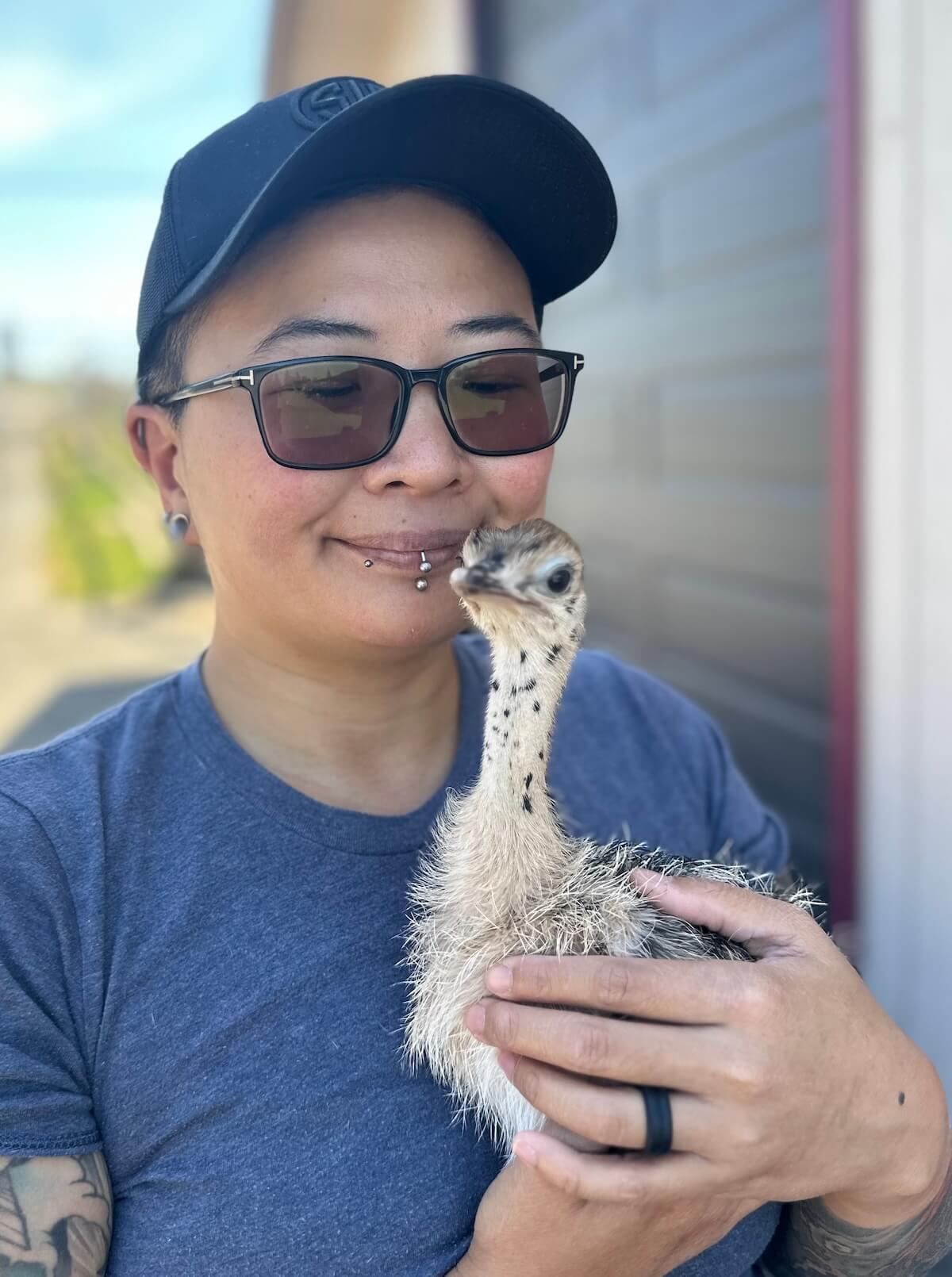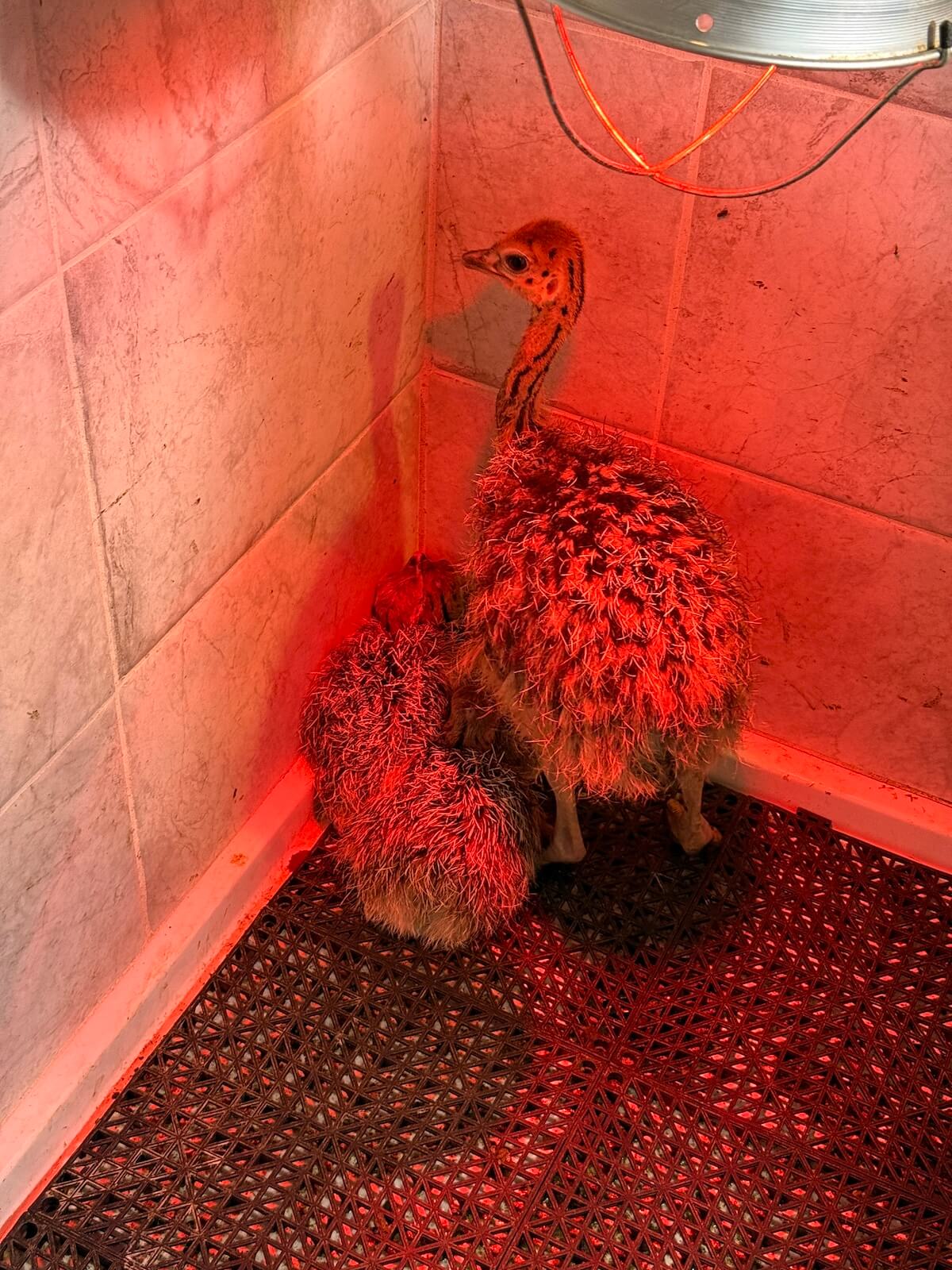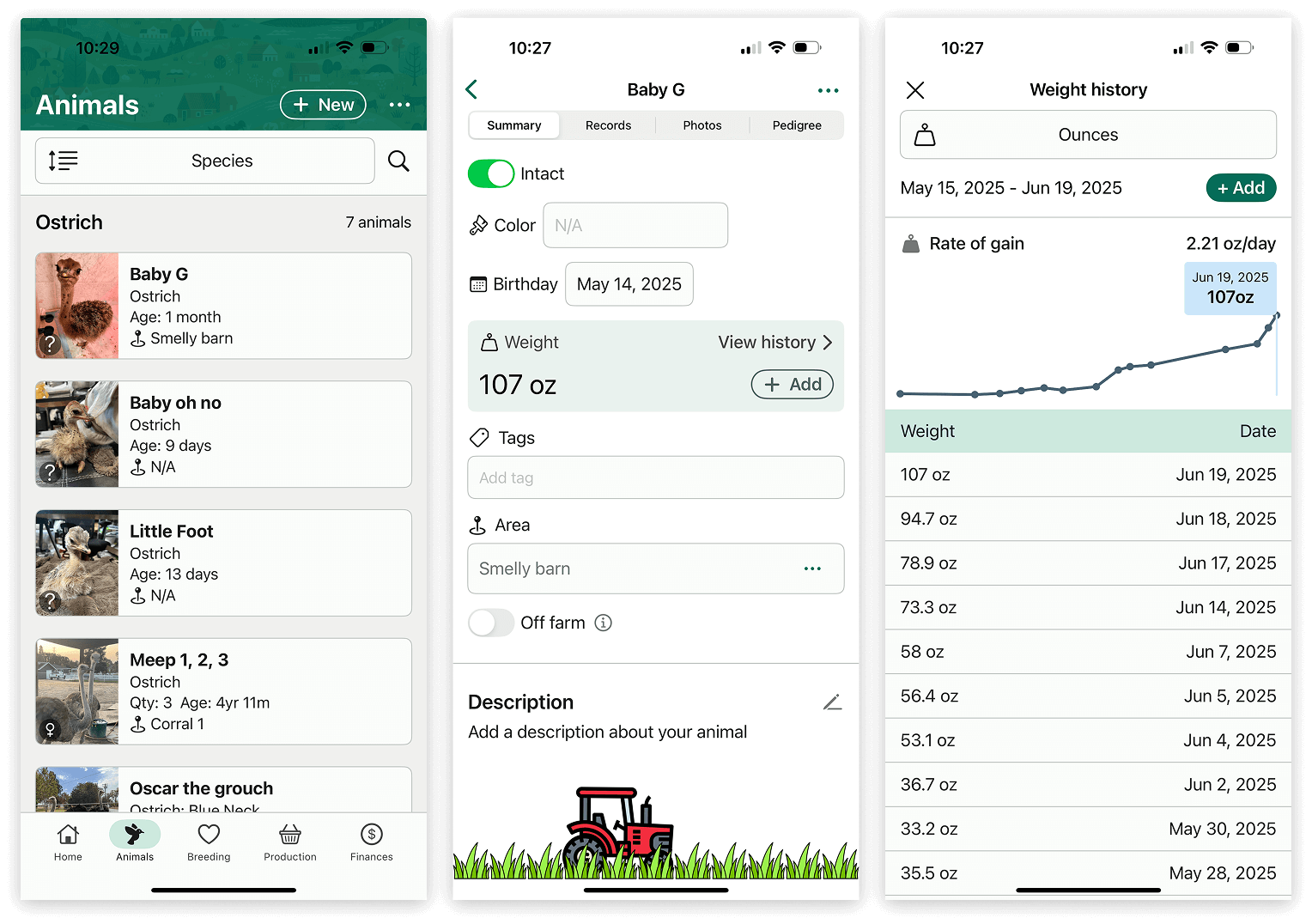Raising Baby Ostriches: FarmKeep's Chick Care Guide
Bringing a new life into the world is always a marvel, and raising baby ostriches can be an incredibly rewarding adventure. If you're reading this, congratulations on having successfully hatched your own baby ostriches! Or maybe you are curious about what it takes to raise baby ostriches and want to know just how you can provide the best start for these remarkable creatures.

Understanding Baby Ostrich Needs
Essential Baby Ostrich Care Tips
One of the most critical aspects of baby ostrich care is maintaining the right temperature. Chicks need a warm environment, typically around 85-90°F (29-32°C) for the first few weeks. Gradually decrease the temperature as they grow older. Once they are 2 feet tall, they can be moved to residing outside full time, but letting them out to enjoy some sunshine before then is also a good way to keep them happy and healthy. Providing a clean living space is crucial for preventing diseases. Regular cleaning and disinfection of the brooder or enclosure will help keep your ostrich chicks healthy and thriving.
Creating a Safe Environment
Safety is paramount when raising baby ostriches. Their living space should be free from hazards and designed to accommodate their unique needs.
The enclosure should have smooth walls to prevent injury and be spacious enough for the chicks to move around comfortably. Ensure there are no sharp edges or small objects that could be accidentally ingested. Avoid using bedding as they may ingest it. We recommend puppy pee pads for the first week so they can easily see their food, and as they get bigger, move them to a brooder that has drainage is helpful. They produce both liquid and solid waste so their brooding area can get messy quickly.
Proper flooring is essential to prevent leg injuries. A non-slip surface, such as rubber mats provides good traction and comfort for the growing chicks.

Importance of Social Interaction
Ostriches are social animals, and providing opportunities for interaction is crucial for their development. Chicks benefit from being raised in small groups, which helps them learn important social behaviors. Never raise an ostrich chick alone with no interaction as that will increase its chances of death. If you don't have multiple ostrich chicks to raise in a group, you can raise a single ostrich chick with more mature turkey poults, ducklings, or goslings.
Interacting with your ostrich chicks regularly helps build trust and reduces stress. Spend time observing them and gently handling them to acclimate them to human presence.
Remember that while socialization is important, it's equally crucial to respect their space and not overwhelm them. Balance is key in fostering healthy, well-adjusted ostrich chicks.
Feeding Your Ostrich Hatchlings
Proper nutrition is vital for the growth and development of ostrich chicks. Let's dive into the feeding guidelines, nutritional needs, and common mistakes to avoid when feeding your ostrich hatchlings.
Ostrich Chick Feeding Guidelines
Feeding ostrich chicks requires careful attention to their nutritional needs and eating habits. Following proper guidelines ensures healthy growth and development.
For the first few days after hatching, chicks don't need food as they're still absorbing nutrients from their yolk sac. After this period, introduce a specially formulated ostrich starter feed. We recommend Mazuri Ratite Starter. If you don't have access to this feed, you can feed a mix of All Flock Starter and boiled eggs. Provide leafy greens such as spinach or kale as well. Always provide fresh, clean water alongside their feed.
Nutritional Needs for Growth
Ostrich chicks have specific nutritional requirements to support their rapid growth. A balanced diet is crucial for their overall health and development.
Protein is essential for muscle development and growth. Ostrich chicks require a diet high in protein, typically around 20-24% in their starter feed.
Calcium and phosphorus are crucial for bone development. Ensure the feed contains the right balance of these minerals to prevent leg deformities and other growth issues.

Common Feeding Mistakes to Avoid
When raising ostrich chicks, it's important to be aware of common feeding mistakes that can impact their health and growth. Providing an imbalanced diet can result in nutritional deficiencies. Always use a specially formulated ostrich feed rather than trying to create your own mix. Neglecting to provide grit can hinder digestion. Offer small amounts of fine grit to help chicks process their food properly.
Ensuring Baby Ostrich Health
Maintaining the health of your ostrich chicks is crucial for their survival and long-term well-being. Let's explore how to monitor their health, implement preventative measures, and address common health issues.
Monitoring Health and Development
Regular health checks are essential for catching any potential issues early. Keep a close eye on your ostrich chicks' growth and behavior. Weight gain is a key indicator of health. Weigh your chicks regularly and compare their growth to standard charts for ostrich development. Consistent weight gain is a good sign of proper nutrition and overall health. On our farm, we use the FarmKeep app to easily track weigh ins and rate of gain for our ostrich chicks.

Observe your chicks' behavior daily. Look for signs of alertness, active movement, and normal eating habits. Any sudden changes in behavior could indicate health problems.
Preventative Health Measures
Taking proactive steps to prevent health issues is crucial in ostrich chick care. Implementing a few key measures can significantly reduce the risk of illness. Vaccination is an important aspect of preventative care. You can learn more about common ratite vaccines here. Consult with a veterinarian experienced in ostrich care to develop an appropriate vaccination schedule for your chicks. Some people choose not to vaccinate their ostriches as well. There are tradeoffs so do more research before you decide what's best for you.
Maintaining a clean environment is crucial for preventing diseases. Regularly clean and disinfect the brooder or enclosure, and practice good biosecurity measures to prevent the introduction of pathogens.
Addressing Common Health Issues
Despite best efforts, health issues can still arise. Being prepared to address common problems quickly can make a significant difference in your chicks' recovery. Leg problems are a common concern in growing ostriches. Watch for signs of lameness or abnormal leg positioning. If a newly hatched ostrich chick has splayed legs, you can create a splint to hold the legs in a more natural position, similar to how you might bind the legs of other type of chicks. Early intervention, often through adjustments in diet and exercise, can prevent long-term issues.
Respiratory infections can be serious in young ostriches. Look out for symptoms such as labored breathing or nasal discharge. Prompt veterinary care is essential if you suspect a respiratory problem.

Remember, while this guide provides a solid foundation for raising baby ostriches, each situation is unique. Always consult with experienced ostrich farmers or veterinarians for personalized advice tailored to your specific circumstances. The American Ostrich Association can be a great resource and place to ask questions.



